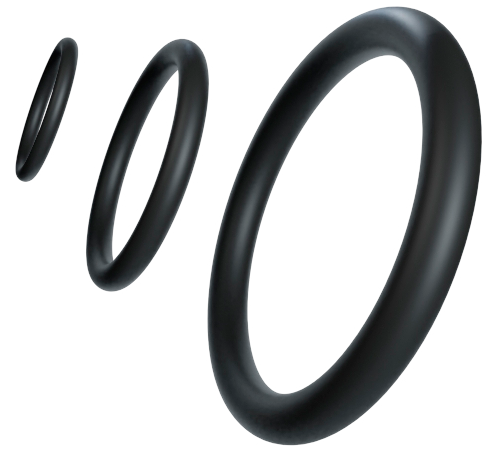O-Ring Materials
What material is an O-Ring made of?
The materials of the O-Rings depend on where they are going to be used to always ensure their tightness and avoid leaks.
O-Rings and Sealing Products
Most common and commonly used O-Ring materials
Each material has its advantages and limitations, so it is important to choose the right material according to the working conditions.
O-Rings may seem simple, but your choice can make a big difference in equipment performance and durability.
But what materials can O-Rings be made of? Here are some of the most common ones:


NBR
NBR, or nitrile-butadiene rubber, is a synthetic elastomer noted for its excellent resistance to oils and fuels.

FKM
FKM is a synthetic elastomer that stands out for its exceptional resistance to extreme conditions. It is especially valued in industries that demand high performance and durability.

EPDM
EPDM is a type of synthetic rubber that is noted for its exceptional resistance to environmental and chemical factors. It is particularly suitable for applications requiring durability and reliability in harsh conditions.

VMQ
Silicone is a synthetic elastomer known for its good resistance to extreme temperatures. It is inert and non-reactive, making it safe for applications in the food and medical industries.

HNBR
HNBR is a hydrogenated nitrile rubber, an improved version of NBR (Nitrile) that has been modified to improve its resistance to extreme temperatures, oils and chemicals.

FFKM
FFKM (perfluoroelastomer) is a type of high-performance elastomer designed for extremely demanding applications.

PTFE
A material known for its strength for O-Rings: PTFE, also known as Teflon®.

FVMQ
A variant of conventional silicone with greater resistance to oils, fuels and extreme temperatures, FVMQ.
Do you have any doubts? Do you want to know which material is the most suitable for your needs?
Write to us at
hoseco@hoseco.com
